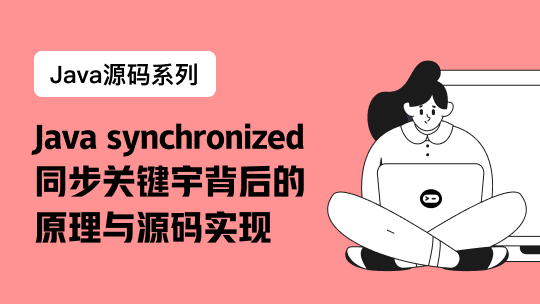作者:阿进的写字台 cnblogs.com/homejim/p/9909657.html
温馨提示:文中代码看不全可左右滑动 MyBatis 令人喜欢的一大特性就是动态 SQL。 在使用 JDBC 的过程中, 根据条件进行 SQL 的拼接是很麻烦且很容易出错的。 MyBatis 动态 SQL 的出现, 解决了这个麻烦。
MyBatis通过 OGNL 来进行动态 SQL 的使用的。目前, 动态 SQL 支持以下几种标签:
1 数据准备
为了后面的演示, 创建了一个 Maven 项目 mybatis-dynamic, 创建了对应的数据库和表
DROP TABLE IF EXISTS `student`;
CREATE TABLE `student` (
`student_id` int(10) unsigned NOT NULL AUTO_INCREMENT COMMENT '编号',
`name` varchar(20) DEFAULT NULL COMMENT '姓名',
`phone` varchar(20) DEFAULT NULL COMMENT '电话',
`email` varchar(50) DEFAULT NULL COMMENT '邮箱',
`sex` tinyint(4) DEFAULT NULL COMMENT '性别',
`locked` tinyint(4) DEFAULT NULL COMMENT '状态(0:正常,1:锁定)',
`gmt_created` datetime DEFAULT CURRENT_TIMESTAMP COMMENT '存入数据库的时间',
`gmt_modified` datetime DEFAULT CURRENT_TIMESTAMP ON UPDATE CURRENT_TIMESTAMP COMMENT '修改的时间',
`delete` int(11) DEFAULT NULL,
PRIMARY KEY (`student_id`)
) ENGINE=InnoDB AUTO_INCREMENT=7 DEFAULT CHARSET=utf8mb4 COLLATE=utf8mb4_0900_ai_ci COMMENT='学生表';
对应的项目结构
2 if 标签
if 标签是我们最常使用的。 在查询、删除、更新的时候很可能会使用到。 必须结合 test 属性联合使用。
2.1 在 WHERE 条件中使用 if 标签
这是常见的一种现象, 我们在进行按条件查询的时候, 可能会有多种情况。
2.1.1 查询条件
根据输入的学生信息进行条件检索
当只输入用户名时, 使用用户名进行模糊检索; 当只输入性别时, 使用性别进行完全匹配 当用户名和性别都存在时, 用这两个条件进行查询匹配查询 2.1.2 动态 SQL
接口函数
/**
* 根据输入的学生信息进行条件检索
* 1. 当只输入用户名时, 使用用户名进行模糊检索;
* 2. 当只输入邮箱时, 使用性别进行完全匹配
* 3. 当用户名和性别都存在时, 用这两个条件进行查询匹配的用
* [@param](https://my.oschina.net/u/2303379) student
* [@return](https://my.oschina.net/u/556800)
*/
List<Student> selectByStudentSelective(Student student);
对应的动态 SQL
<select id="selectByStudentSelective" resultMap="BaseResultMap" parameterType="com.homejim.mybatis.entity.Student">
select
<include refid="Base_Column_List" />
from student
where 1=1
<if test="name != null and name !=''">
and name like concat('%', #{name}, '%')
</if>
<if test="sex != null">
and sex=#{sex}
</if>
</select>
在此 SQL 语句中, where 1=1 是多条件拼接时的小技巧, 后面的条件查询就可以都用 and 了。
同时, 我们添加了 if 标签来处理动态 SQL
<if test="name != null and name !=''">
and name like concat('%', #{name}, '%')
</if>
<if test="sex != null">
and sex=#{sex}
</if>
此 if 标签的 test 属性值是一个符合 OGNL 的表达式, 表达式可以是 true 或 false。 如果表达式返回的是数值, 则0为 false, 非 0 为 true;
2.1.3 测试
@Test
public void selectByStudent() {
SqlSession sqlSession = null;
sqlSession = sqlSessionFactory.openSession();
StudentMapper studentMapper = sqlSession.getMapper(StudentMapper.class);
Student search = new Student();
search.setName("明");
System.out.println("只有名字时的查询");
List<Student> studentsByName = studentMapper.selectByStudentSelective(search);
for (int i = 0; i < studentsByName.size(); i++) {
System.out.println(ToStringBuilder.reflectionToString(studentsByName.get(i), ToStringStyle.MULTI_LINE_STYLE));
}
search.setName(null);
search.setSex((byte) 1);
System.out.println("只有性别时的查询");
List<Student> studentsBySex = studentMapper.selectByStudentSelective(search);
for (int i = 0; i < studentsBySex.size(); i++) {
System.out.println(ToStringBuilder.reflectionToString(studentsBySex.get(i), ToStringStyle.MULTI_LINE_STYLE));
}
System.out.println("姓名和性别同时存在的查询");
search.setName("明");
List<Student> studentsByNameAndSex = studentMapper.selectByStudentSelective(search);
for (int i = 0; i < studentsByNameAndSex.size(); i++) {
System.out.println(ToStringBuilder.reflectionToString(studentsByNameAndSex.get(i), ToStringStyle.MULTI_LINE_STYLE));
}
sqlSession.commit();
sqlSession.close();
}
只有名字时的查询, 发送的语句和结果
查询的条件只发送了
where 1=1 and name like concat('%', ?, '%') 只有性别时的查询, 发送的语句和结果
查询的条件只发送了
where 1=1 and sex=? 姓名和性别同时存在的查询, 发送的语句和结果
查询条件
where 1=1 and name like concat('%', ?, '%') and sex=? 2.2 在 UPDATE 更新列中使用 if 标签
有时候我们不希望更新所有的字段, 只更新有变化的字段。
2.2.1 更新条件
只更新有变化的字段, 空值不更新。
2.2.1 动态 SQL
接口方法
/**
* 更新非空属性
*/
int updateByPrimaryKeySelective(Student record);
对应的 SQL
<update id="updateByPrimaryKeySelective" parameterType="com.homejim.mybatis.entity.Student">
update student
<set>
<if test="name != null">
`name` = #{name,jdbcType=VARCHAR},
</if>
<if test="phone != null">
phone = #{phone,jdbcType=VARCHAR},
</if>
<if test="email != null">
email = #{email,jdbcType=VARCHAR},
</if>
<if test="sex != null">
sex = #{sex,jdbcType=TINYINT},
</if>
<if test="locked != null">
locked = #{locked,jdbcType=TINYINT},
</if>
<if test="gmtCreated != null">
gmt_created = #{gmtCreated,jdbcType=TIMESTAMP},
</if>
<if test="gmtModified != null">
gmt_modified = #{gmtModified,jdbcType=TIMESTAMP},
</if>
</set>
where student_id = #{studentId,jdbcType=INTEGER}
2.2.3 测试
2.3 在 INSERT 动态插入中使用 if 标签
我们插入数据库中的一条记录, 不是每一个字段都有值的, 而是动态变化的。 在这时候使用 if 标签, 可帮我们解决这个问题。
2.3.1 插入条件
只有非空属性才插入。
2.3.2 动态SQL
接口方法
/**
* 非空字段才进行插入
*/
int insertSelective(Student record);
对应的SQL
<insert id="insertSelective" parameterType="com.homejim.mybatis.entity.Student">
insert into student
<trim prefix="(" suffix=")" suffixOverrides=",">
<if test="studentId != null">
student_id,
</if>
<if test="name != null">
`name`,
</if>
<if test="phone != null">
phone,
</if>
<if test="email != null">
email,
</if>
<if test="sex != null">
sex,
</if>
<if test="locked != null">
locked,
</if>
<if test="gmtCreated != null">
gmt_created,
</if>
<if test="gmtModified != null">
gmt_modified,
</if>
</trim>
<trim prefix="values (" suffix=")" suffixOverrides=",">
<if test="studentId != null">
#{studentId,jdbcType=INTEGER},
</if>
<if test="name != null">
#{name,jdbcType=VARCHAR},
</if>
<if test="phone != null">
#{phone,jdbcType=VARCHAR},
</if>
<if test="email != null">
#{email,jdbcType=VARCHAR},
</if>
<if test="sex != null">
#{sex,jdbcType=TINYINT},
</if>
<if test="locked != null">
#{locked,jdbcType=TINYINT},
</if>
<if test="gmtCreated != null">
#{gmtCreated,jdbcType=TIMESTAMP},
</if>
<if test="gmtModified != null">
#{gmtModified,jdbcType=TIMESTAMP},
</if>
</trim>
</insert>
这个 SQL 大家应该很熟悉, 毕竟是自动生成的。
2.3.3 测试
[@Test](https://my.oschina.net/azibug)
public void insertByStudentSelective() {
SqlSession sqlSession = null;
sqlSession = sqlSessionFactory.openSession();
StudentMapper studentMapper = sqlSession.getMapper(StudentMapper.class);
Student student = new Student();
student.setName("小飞机");
student.setPhone("13838438899");
student.setEmail("xiaofeiji@qq.com");
student.setLocked((byte) 0);
System.out.println(studentMapper.insertSelective(student));
sqlSession.commit();
sqlSession.close();
}
对应的结果
SQL 中, 只有非空的字段才进行了插入。
3 choose 标签
choose when otherwise 标签可以帮我们实现 if else 的逻辑。一个 choose 标签至少有一个 when, 最多一个otherwise。
下面是一个查询的例子。
3.1 查询条件
假设 name 具有唯一性, 查询一个学生
当 studen_id 有值时, 使用 studen_id 进行查询; 当 studen_id 没有值时, 使用 name 进行查询; 否则返回空 3.2 动态SQL
接口方法
/**
* - 当 studen_id 有值时, 使用 studen_id 进行查询;
* - 当 studen_id 没有值时, 使用 name 进行查询;
* - 否则返回空
*/
Student selectByIdOrName(Student record);
对应的SQL
<select id="selectByIdOrName" resultMap="BaseResultMap" parameterType="com.homejim.mybatis.entity.Student">
select
<include refid="Base_Column_List" />
from student
where 1=1
<choose>
<when test="studentId != null">
and student_id=#{studentId}
</when>
<when test="name != null and name != ''">
and name=#{name}
</when>
<otherwise>
and 1=2
</otherwise>
</choose>
</select>
3.3 测试
@Test
public void selectByIdOrName() {
SqlSession sqlSession = null;
sqlSession = sqlSessionFactory.openSession();
StudentMapper studentMapper = sqlSession.getMapper(StudentMapper.class);
Student student = new Student();
student.setName("小飞机");
student.setStudentId(1);
Student studentById = studentMapper.selectByIdOrName(student);
System.out.println("有 ID 则根据 ID 获取");
System.out.println(ToStringBuilder.reflectionToString(studentById, ToStringStyle.MULTI_LINE_STYLE));
student.setStudentId(null);
Student studentByName = studentMapper.selectByIdOrName(student);
System.out.println("没有 ID 则根据 name 获取");
System.out.println(ToStringBuilder.reflectionToString(studentByName, ToStringStyle.MULTI_LINE_STYLE));
student.setName(null);
Student studentNull = studentMapper.selectByIdOrName(student);
System.out.println("没有 ID 和 name, 返回 null");
Assert.assertNull(studentNull);
sqlSession.commit();
sqlSession.close();
}
有 ID 则根据 ID 获取, 结果
没有 ID 则根据 name 获取
没有 ID 和 name, 返回 null
4 trim(set、where)
这三个其实解决的是类似的问题。 如我们在写前面的[在 WHERE 条件中使用 if 标签] SQL 的时候, where 1=1 这个条件我们是不希望存在的。
4.1 where
4.1.1 查询条件
根据输入的学生信息进行条件检索。
当只输入用户名时, 使用用户名进行模糊检索; 当只输入性别时, 使用性别进行完全匹配 当用户名和性别都存在时, 用这两个条件进行查询匹配查询 不使用 where 1=1。
4.1.2 动态 SQL
很显然, 我们要解决这几个问题
当条件都不满足时: 此时 SQL 中应该要不能有 where , 否则导致出错 当 if 有条件满足时: SQL 中需要有 where, 且第一个成立的 if 标签下的 and | or 等要去掉 这时候, 我们可以使用 where 标签。
接口方法
/**
* 根据输入的学生信息进行条件检索
* 1. 当只输入用户名时, 使用用户名进行模糊检索;
* 2. 当只输入邮箱时, 使用性别进行完全匹配
* 3. 当用户名和性别都存在时, 用这两个条件进行查询匹配的用
*/
List<Student> selectByStudentSelectiveWhereTag(Student student);
对应的 SQL
<select id="selectByStudentSelectiveWhereTag" resultMap="BaseResultMap" parameterType="com.homejim.mybatis.entity.Student">
select
<include refid="Base_Column_List" />
from student
<where>
<if test="name != null and name !=''">
and name like concat('%', #{name}, '%')
</if>
<if test="sex != null">
and sex=#{sex}
</if>
</where>
</select>
4.1.3 测试
[@Test](https://my.oschina.net/azibug)
public void selectByStudentWhereTag() {
SqlSession sqlSession = null;
sqlSession = sqlSessionFactory.openSession();
StudentMapper studentMapper = sqlSession.getMapper(StudentMapper.class);
Student search = new Student();
search.setName("明");
System.out.println("只有名字时的查询");
List<Student> studentsByName = studentMapper.selectByStudentSelectiveWhereTag(search);
for (int i = 0; i < studentsByName.size(); i++) {
System.out.println(ToStringBuilder.reflectionToString(studentsByName.get(i), ToStringStyle.MULTI_LINE_STYLE));
}
search.setSex((byte) 1);
System.out.println("姓名和性别同时存在的查询");
List<Student> studentsBySex = studentMapper.selectByStudentSelectiveWhereTag(search);
for (int i = 0; i < studentsBySex.size(); i++) {
System.out.println(ToStringBuilder.reflectionToString(studentsBySex.get(i), ToStringStyle.MULTI_LINE_STYLE));
}
System.out.println("姓名和性别都不存在时查询");
search.setName(null);
search.setSex(null);
List<Student> studentsByNameAndSex = studentMapper.selectByStudentSelectiveWhereTag(search);
for (int i = 0; i < studentsByNameAndSex.size(); i++) {
System.out.println(ToStringBuilder.reflectionToString(studentsByNameAndSex.get(i), ToStringStyle.MULTI_LINE_STYLE));
}
sqlSession.commit();
sqlSession.close();
}
只有名字时的查询, 有 where
姓名和性别同时存在的查询, 有 where
姓名和性别都不存在时查询, 此时, where 不会再出现了。
4.2 set
set 标签也类似, 在 [2.2 在 UPDATE 更新列中使用 if 标签] 中, 如果我们的方法 updateByPrimaryKeySelective 没有使用
4.3 trim
set 和 where 其实都是 trim 标签的一种类型, 该两种功能都可以使用 trim 标签进行实现。
4.3.1 trim 来表示 where
如以上的 where 标签, 我们也可以写成
4.3.2 trim 来表示 set
相应的, set 标签可以如下表示
4.3.3 trim 的几个属性
prefix: 当 trim 元素包含有内容时, 增加 prefix 所指定的前缀 prefixOverrides: 当 trim 元素包含有内容时, 去除 prefixOverrides 指定的 前缀 suffix: 当 trim 元素包含有内容时, 增加 suffix 所指定的后缀 suffixOverrides: 当 trim 元素包含有内容时, 去除 suffixOverrides 指定的后缀 5 foreach 标签
foreach 标签可以对数组, Map 或实现 Iterable 接口。
foreach 中有以下几个属性:
collection: 必填, 集合/数组/Map的名称. item: 变量名。 即从迭代的对象中取出的每一个值 index: 索引的属性名。 当迭代的对象为 Map 时, 该值为 Map 中的 Key. open: 循环开头的字符串 close: 循环结束的字符串 separator: 每次循环的分隔符 其他的比较好理解, collection 中的值应该怎么设定呢?
跟接口方法中的参数相关。
- 只有一个数组参数或集合参数
默认情况: 集合collection=list, 数组是collection=array
推荐: 使用 @Param 来指定参数的名称, 如我们在参数前@Param("ids"), 则就填写 collection=ids
- 多参数
多参数请使用 @Param 来指定, 否则SQL中会很不方便
- 参数是Map
指定为 Map 中的对应的 Key 即可。 其实上面的 @Param 最后也是转化为 Map 的。
- 参数是对象
使用属性.属性即可。
5.1 在 where 中使用 foreach
在 where条件中使用, 如按id集合查询, 按id集合删除等。
5.1.1 查询条件
我们希望查询用户 id 集合中的所有用户信息。
5.1.2 动态 SQL
函数接口
/**
* 获取 id 集合中的用户信息
* @param ids
* @return
*/
List<Student> selectByStudentIdList(List<Integer> ids);
对应 SQL
<select id="selectByStudentIdList" resultMap="BaseResultMap">
select
<include refid="Base_Column_List" />
from student
where student_id in
<foreach collection="list" item="id" open="(" close=")" separator="," index="i">
#{id}
</foreach>
</select>
5.1.3 测试
@Test
public void selectByStudentIdList() {
SqlSession sqlSession = null;
sqlSession = sqlSessionFactory.openSession();
StudentMapper studentMapper = sqlSession.getMapper(StudentMapper.class);
List<Integer> ids = new LinkedList<>();
ids.add(1);
ids.add(3);
List<Student> students = studentMapper.selectByStudentIdList(ids);
for (int i = 0; i < students.size(); i++) {
System.out.println(ToStringBuilder.reflectionToString(students.get(i), ToStringStyle.MULTI_LINE_STYLE));
}
sqlSession.commit();
sqlSession.close();
}
结果
5.2 foreach 实现批量插入
可以通过foreach来实现批量插入。
5.2.1 动态SQL
接口方法
/**
* 批量插入学生
*/
int insertList(List<Student> students);
对应的SQL
<insert id="insertList">
insert into student(name, phone, email, sex, locked)
values
<foreach collection="list" item="student" separator=",">
(
#{student.name}, #{student.phone},#{student.email},
#{student.sex},#{student.locked}
)
</foreach>
</insert>
5.2.2 测试
5.2.2 测试
@Test
public void insertList() {
SqlSession sqlSession = null;
sqlSession = sqlSessionFactory.openSession();
StudentMapper studentMapper = sqlSession.getMapper(StudentMapper.class);
List<Student> students = new LinkedList<>();
Student stu1 = new Student();
stu1.setName("批量01");
stu1.setPhone("13888888881");
stu1.setLocked((byte) 0);
stu1.setEmail("13888888881@138.com");
stu1.setSex((byte) 1);
students.add(stu1);
Student stu2 = new Student();
stu2.setName("批量02");
stu2.setPhone("13888888882");
stu2.setLocked((byte) 0);
stu2.setEmail("13888888882@138.com");
stu2.setSex((byte) 0);
students.add(stu2);
System.out.println(studentMapper.insertList(students));
sqlSession.commit();
sqlSession.close();
}
结果
6 bind 标签
bind 标签是通过 OGNL 表达式去定义一个上下文的变量, 这样方便我们使用。
如在 selectByStudentSelective 方法中, 有如下
7 代码
使用示例:
https://github.com/homejim/mybatis-examples
关注公众号:java宝典














